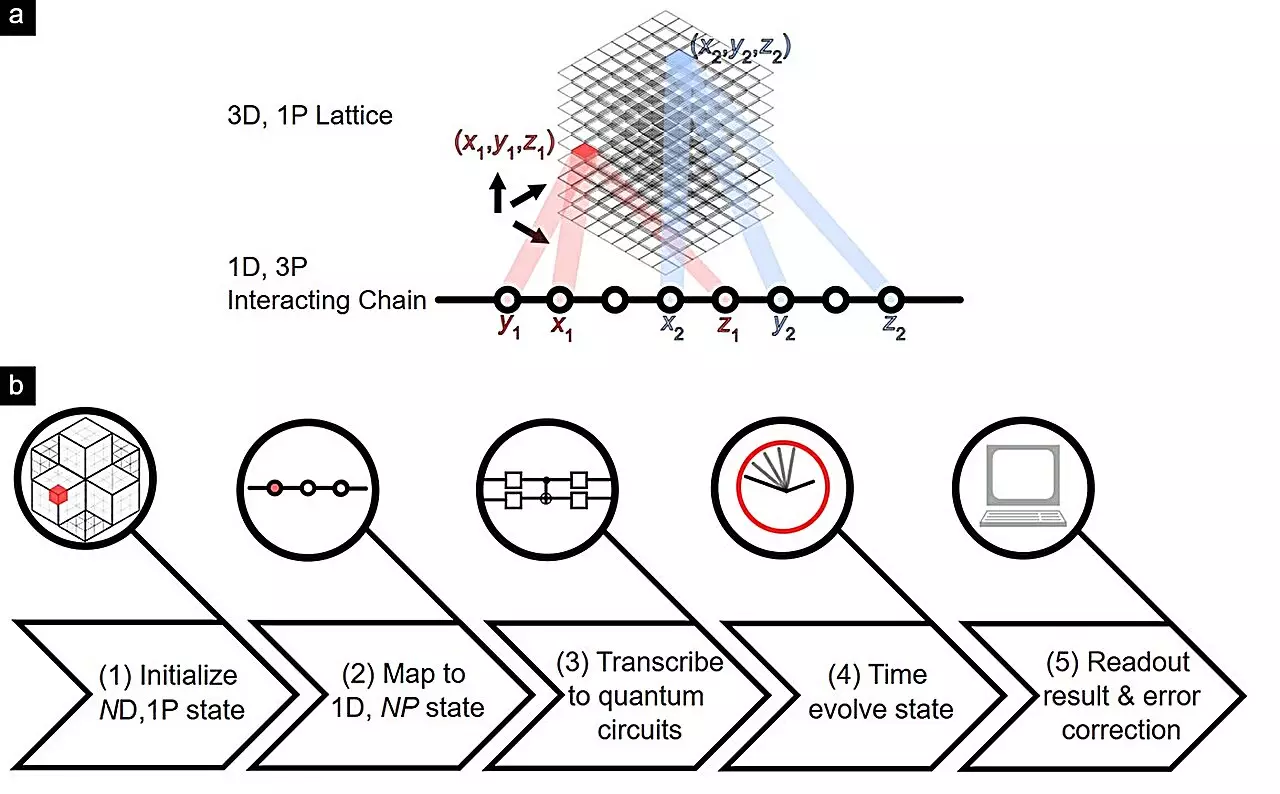In a groundbreaking study, researchers from the National University of Singapore (NUS) have successfully simulated higher-order topological (HOT) lattices with unprecedented accuracy using digital quantum computers. These complex lattice structures have the potential to revolutionize our understanding of advanced quantum materials with robust quantum states that are highly sought after in various technological applications.
The study of topological states of matter, and their HOT counterparts, has garnered significant attention from physicists and engineers alike. The discovery of topological insulators, materials that conduct electricity only on their surfaces or edges while remaining insulating in their interiors, has paved the way for new advancements in material engineering.
Led by NUS Assistant Professor Lee Ching Hua, a team of researchers has developed a scalable approach to encoding large, high-dimensional HOT lattices into simple spin chains on digital quantum computers. By leveraging the vast information storage capacity of quantum computer qubits, the researchers have managed to minimize quantum computing resource requirements in a noise-resistant manner.
The findings of this research, published in the journal Nature Communications, represent a significant step forward in the simulation of advanced quantum materials using digital quantum computers. This development opens up new possibilities in topological material engineering, paving the way for innovative applications of quantum computing.
Despite the limitations of current noisy intermediate-scale quantum (NISQ) devices, the research team has been able to measure topological state dynamics and protected mid-gap spectra of higher-order topological lattices with unprecedented accuracy. This accomplishment is attributed to the use of advanced error mitigation techniques developed in-house.
The ability to simulate high-dimensional HOT lattices represents a significant breakthrough in quantum materials research, offering new avenues for exploration in the field of topological states. This research suggests a potential route to achieving true quantum advantage in the future, unlocking a wealth of opportunities for material engineering.
The study conducted by NUS researchers marks a significant milestone in the advancement of quantum computing in material engineering. The successful simulation of higher-order topological lattices using digital quantum computers opens new doors for innovation and exploration in the field of quantum materials, bringing us one step closer to unlocking the full potential of quantum technology.

